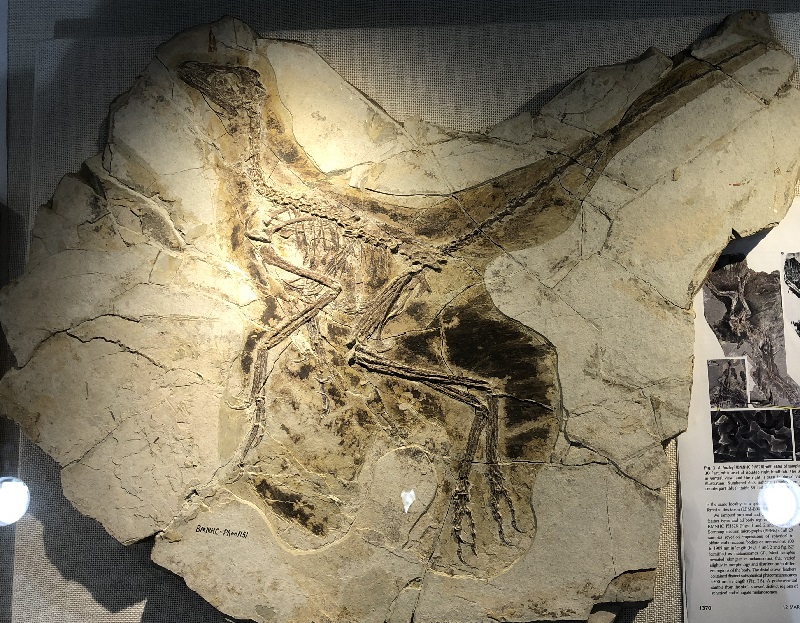BH Staff | May 24, 2023
Age and Locality: Middle Jurassic, Liaoning Province.

Anchiornis huxleyi, commonly known as the “Huxley’s Near Bird Dragon,” is a small, feathered dinosaur belonging to the theropod group. This species lived during the Late Jurassic period, approximately 160 million years ago, in what is now modern-day China.
Discovered in the Tiaojishan Formation of Liaoning Province, Anchiornis huxleyi is renowned for its exceptional preservation, including the presence of extensive feather impressions. These fossilized feathers have provided crucial insights into the early evolution of feathers and flight in dinosaurs.
Anchiornis huxleyi was a relatively small dinosaur, measuring around 60 centimeters (2 feet) in length. It possessed long, slender legs, suggesting it was likely an agile runner. Its arms were equipped with long feathers, suggesting the presence of wings, although it is uncertain if Anchiornis was capable of powered flight or if its wings were primarily used for gliding or display purposes.
The plumage of Anchiornis huxleyi was varied, with colors ranging from black and gray to white and reddish-brown. This coloration is inferred from the microscopic structures of the fossilized feathers, known as melanosomes, which can indicate pigmentation patterns in ancient organisms.
Anchiornis huxleyi holds significant importance in understanding the transition from non-avian dinosaurs to birds. Its combination of bird-like features and reptilian characteristics provides valuable evidence for the evolutionary link between dinosaurs and modern birds. Additionally, the discovery of Anchiornis huxleyi has fueled discussions about the origins of flight and the development of feathered adaptations in dinosaurs.
Overall, Anchiornis huxleyi stands as a remarkable example of the diversity of feathered dinosaurs during the Jurassic period and offers crucial insights into the early stages of avian evolution.
